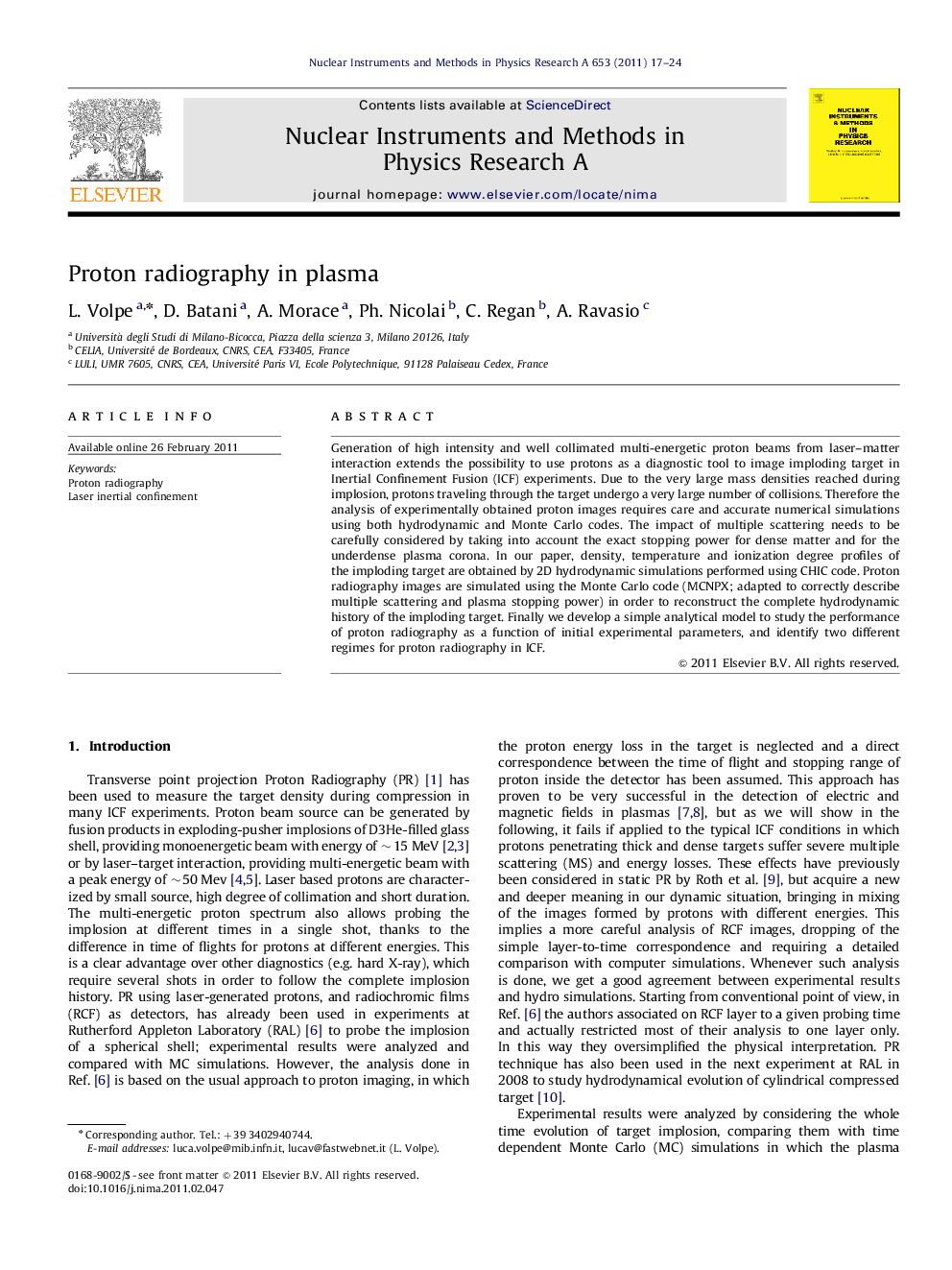| Article ID | Journal | Published Year | Pages | File Type |
|---|---|---|---|---|
| 1824556 | Nuclear Instruments and Methods in Physics Research Section A: Accelerators, Spectrometers, Detectors and Associated Equipment | 2011 | 8 Pages |
Generation of high intensity and well collimated multi-energetic proton beams from laser–matter interaction extends the possibility to use protons as a diagnostic tool to image imploding target in Inertial Confinement Fusion (ICF) experiments. Due to the very large mass densities reached during implosion, protons traveling through the target undergo a very large number of collisions. Therefore the analysis of experimentally obtained proton images requires care and accurate numerical simulations using both hydrodynamic and Monte Carlo codes. The impact of multiple scattering needs to be carefully considered by taking into account the exact stopping power for dense matter and for the underdense plasma corona. In our paper, density, temperature and ionization degree profiles of the imploding target are obtained by 2D hydrodynamic simulations performed using CHIC code. Proton radiography images are simulated using the Monte Carlo code (MCNPX; adapted to correctly describe multiple scattering and plasma stopping power) in order to reconstruct the complete hydrodynamic history of the imploding target. Finally we develop a simple analytical model to study the performance of proton radiography as a function of initial experimental parameters, and identify two different regimes for proton radiography in ICF.
